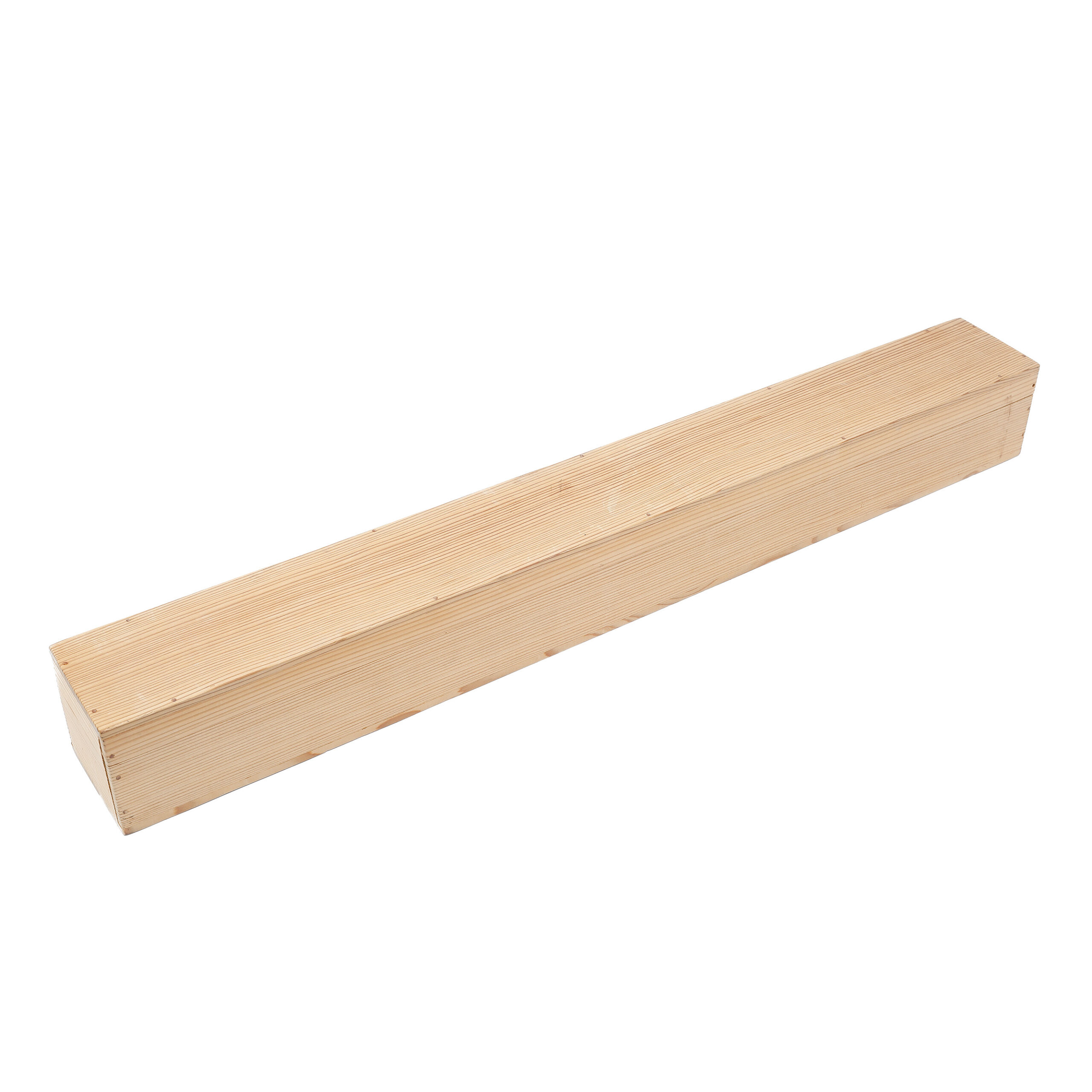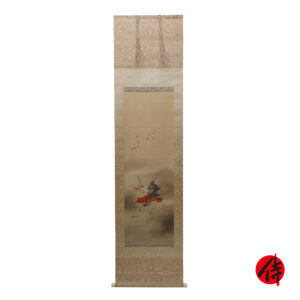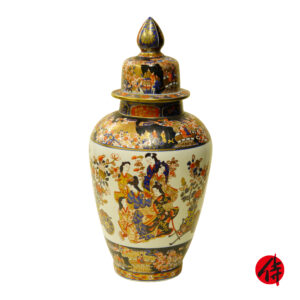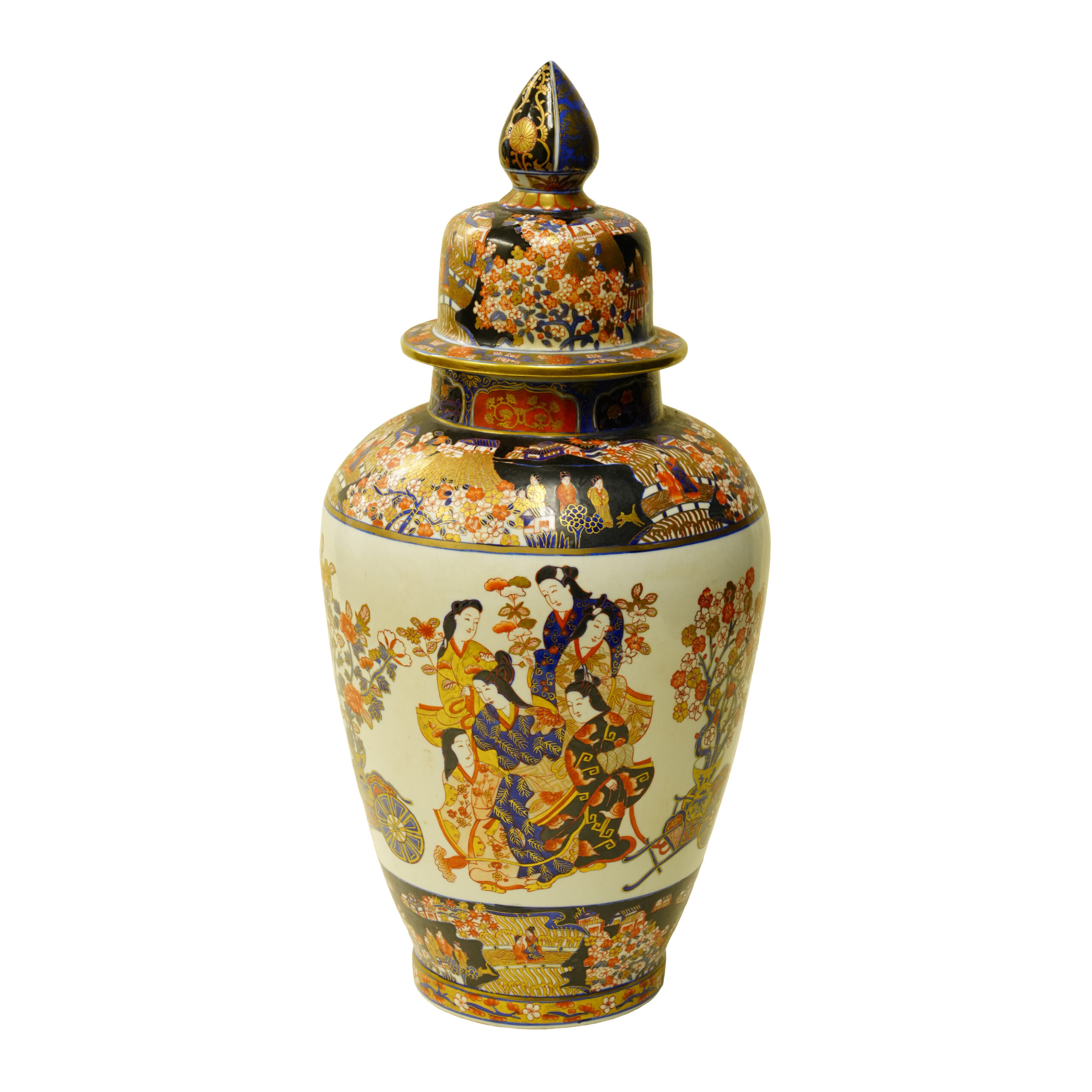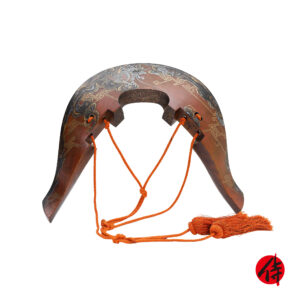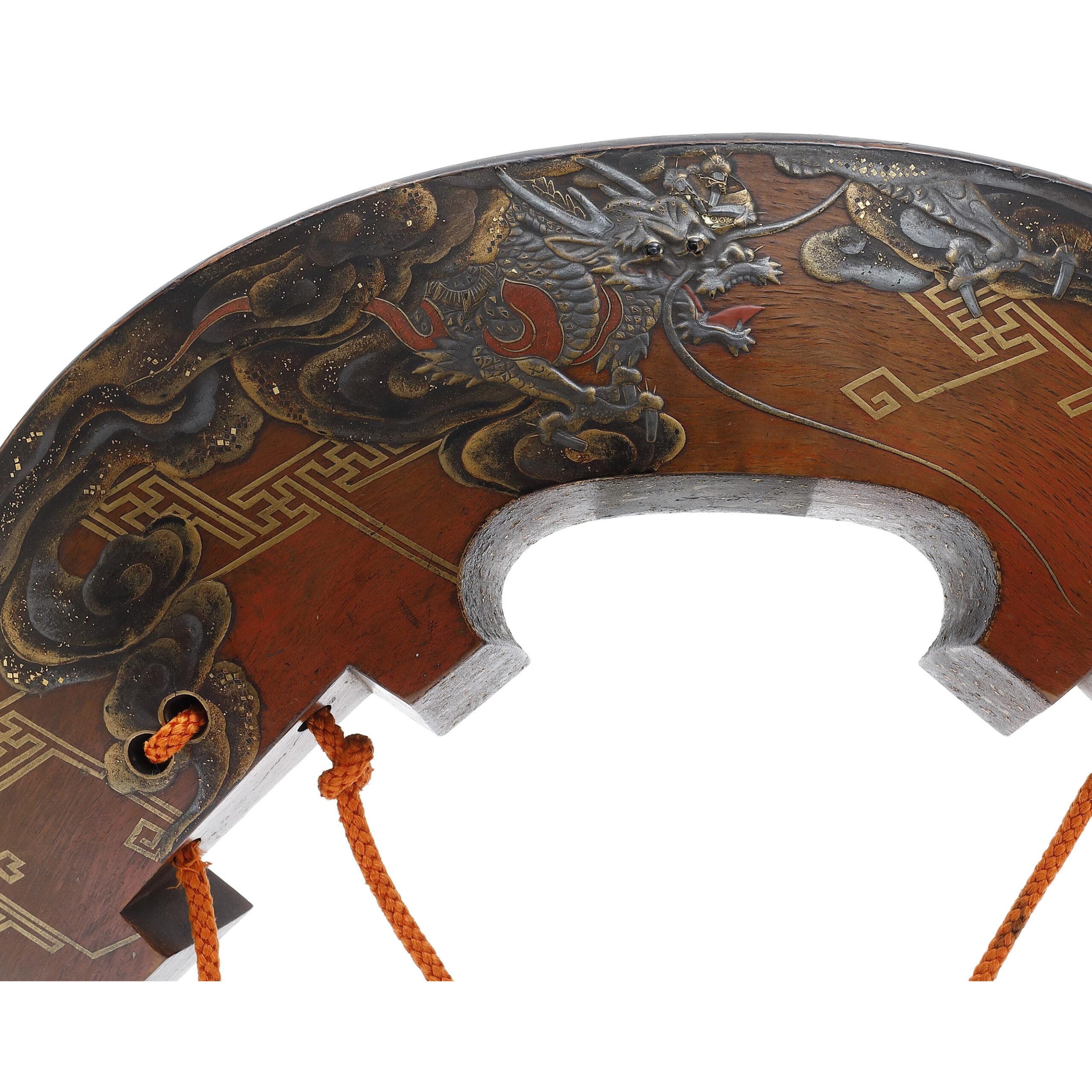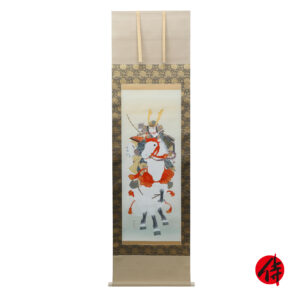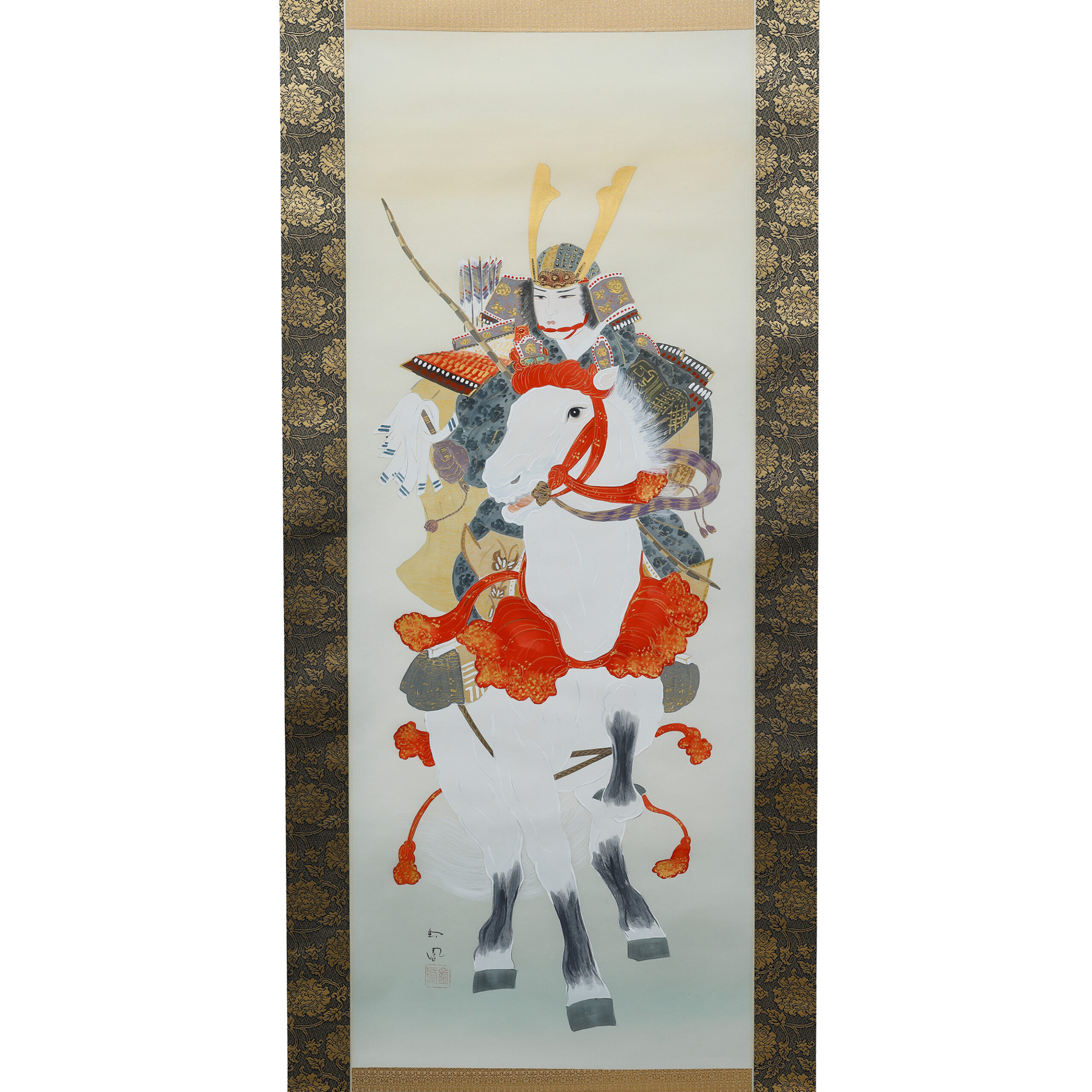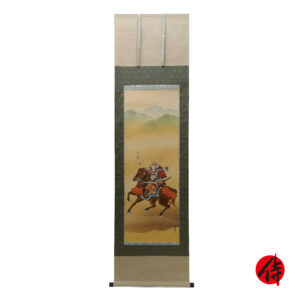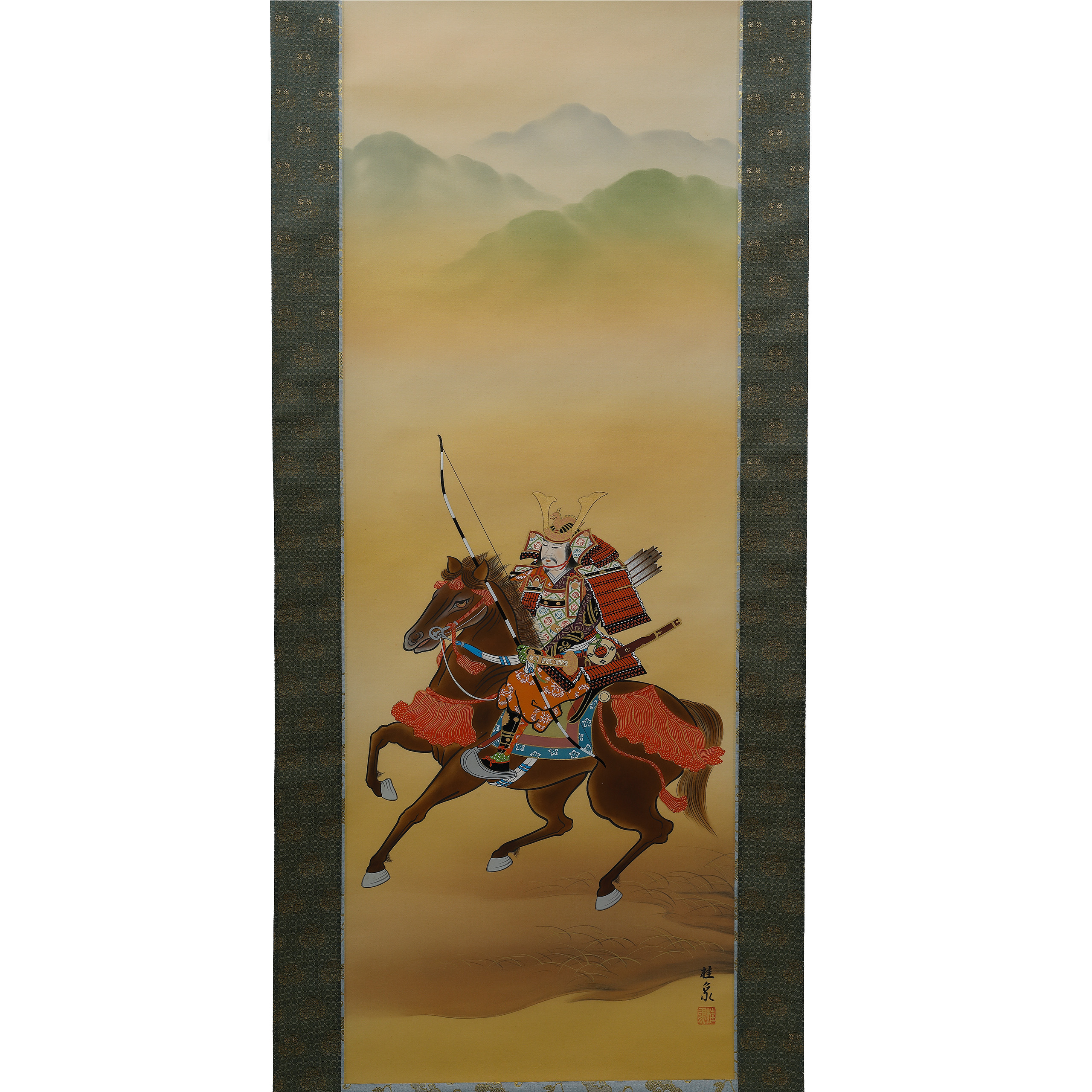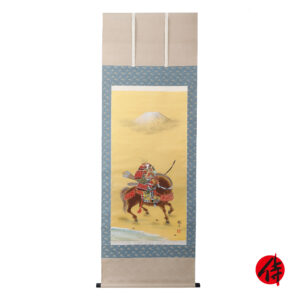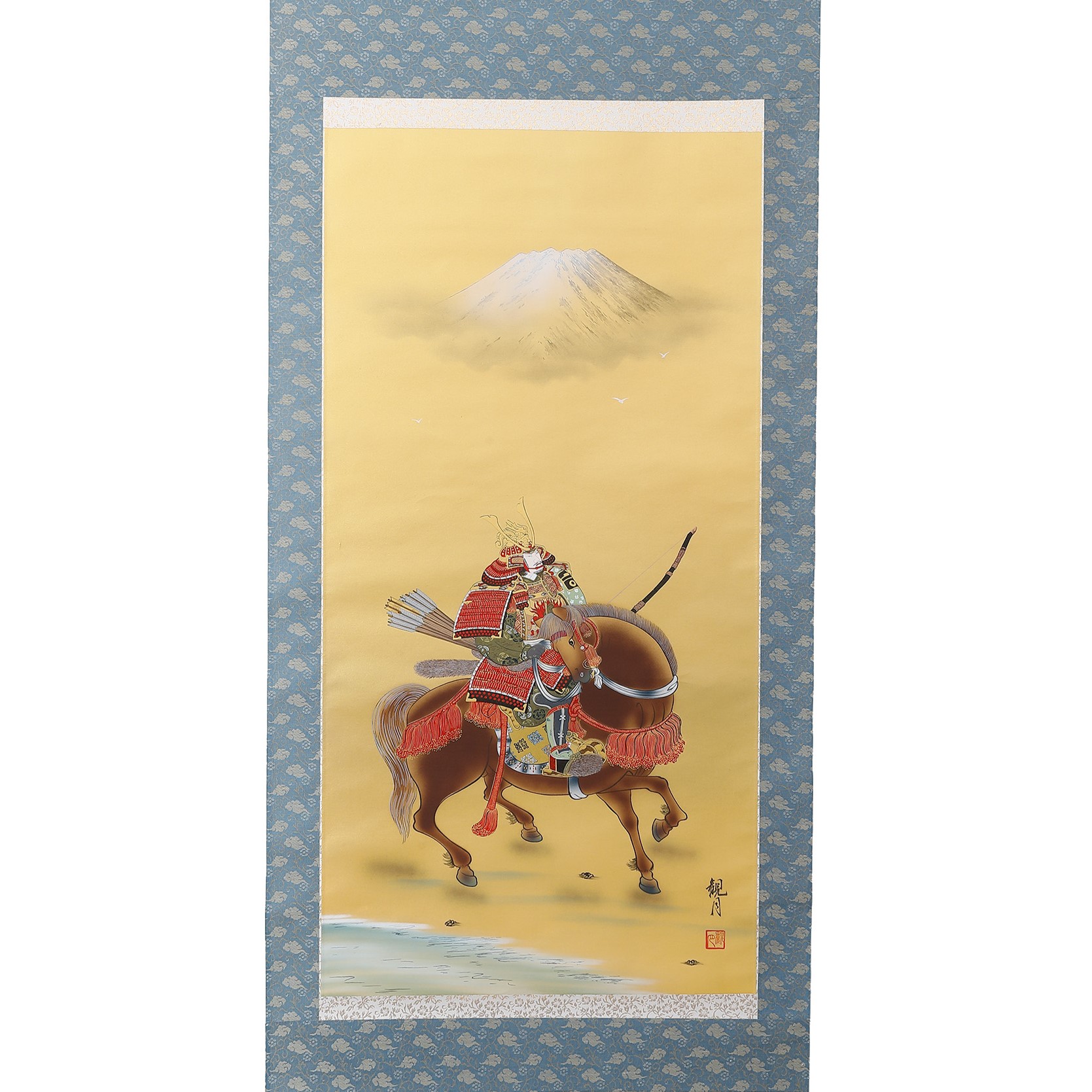Title: Busho Zu
Description
This item is a Kakejiku (掛軸, hanging scroll). When displaying a hanging scroll in a Japanese-style room, it is generally hung on the wall of the Tokonoma (床の間). However, no etiquette says you cannot hang a hanging scroll anywhere other than in Tokonoma or a Japanese-style room. You could enjoy them regardless of where you display them. You could also create an alcove-like space by simply hanging a scroll out of direct sunlight, laying tatami mats under it, and placing Japanese miscellaneous goods and flower arrangements. A Tokonoma is a space in a Japanese-style room where the floor is one step higher than the rest of the room. It was initially thought to be a place where gods resided and was created as a space for people of high status to sit. Since the Edo period, Tokonomas have been created in ordinary houses as a place for guests (high-status people) to sit, and it is considered the most sacred and noble place in a Japanese-style room. In recent years, it has often been set up as a space for art exhibitions, such as hanging scrolls and displaying flowers and ornaments.
Especially this hanging scroll seems to have been the one that was hung in the season of Tango no Sekku (端午の節句). The Tango-no Sekku (端午の節句) is one of the seasonal festivals and generally regarded as the Boy’s Festival. It is said that the Tango-no Sekku comes from the Continent. Since the Muromachi period (1336-1658), there has been a custom in which some kind of items, such as a hanging scroll depicting a Samurai or Samurai armors, were displayed in the hope of boys growing up well and succeeding.
Regarding the design, the hanging scroll depicts a Samurai warrior in full armor. Judging from the luxurious armor of the Samurai, he seems to be of high rank and a military commander (武将, Busho). This armor consists of several parts, and we would like to focus on some of them. The protector for the head is called the Kabuto (兜, helmet). It seems this type of Kabuto is categorized as the Eboshi Kabuto (烏帽子兜). Eboshi (烏帽子) means a hat worn by adult men in ceremonial Japanese dress since the Heian period (794-1185), and was often used as a design for helmets. It is said that compared to the common-used Suji Kabuto and Hoshi Kabuto, the Eboshi Kabuto was lighter and easier to make since it was made of less iron plate. Therefore, this type of Kabuto became popular in the late Warring States period.
In addition, the Maedatemono (前立物, front decoration) is attached to this Kabuto. The motif of Maetate seems to be a Nichirin (日輪, another name for the sun) or a Getsurin/Gatsurin (月輪, another name for the moon). There was a widespread belief among Samurai, the Myouken (妙見) belief. This religion was born in India. It was mixed with the Polestar belief and was brought to Japan from the continent. The sun, the moon, and the stars of the entire universe were the symbols of faith. The Myouken Bosatsu (妙見菩薩, 菩薩 means Bodhisattva) fulfills all wishes such as fertility of rich harvest, peace, the prosperity of the clan, healing of illness, longevity, success in business, traffic safety, academic achievement, marriage, etcetera. Therefore, it is understandable that Samurai cherished sun and moon motifs.
He also holds Saihai (采配) in his right hand. It is a tool made by attaching strips of cloth or paper to the end of a stick so that it could be seen from a distance. It began to be used around the end of the Muromachi period (室町時代, 1336-1573) and is also written as 采幣, 再拝, or 采 in Japanese. This item initially comes from the Sai (旄), a tool used to call a tamed falcon, and its name influenced the name of Saihai. Those who could use a Saihai were limited to the commander of the Ashigaru (足軽, foot soldier) or above or Samurai warriors who had notable military exploits. Being allowed to possess this tool meant commanding a unit, and it was a convenient tool. At the same time, it also had a strong meaning of showing the rank and authority of a military commander. In an actual battle, the movement of the troops was controlled in detail by swinging the Saihai, such as using it as a signal to advance. The signal from this tool differs depending on each military commander, and there is no set pattern. Therefore, it was necessary for the soldiers who received the order to understand the content of the signal perfectly. A theory says that warlords chose their Saihais according to their preferences in the Warring States period. However, in the Edo period, when battles were abolished, this tool became more meaningful than ever as a symbol of authority. The Tokugawa (徳川) family, who ruled the Edo Shogunate, restricted the ownership of these tools based on social status. Saihais were generally made of paper or yak tail hair. Since the Saihai attached to this armor is made of paper, it is the one which was often used on battlefields.
If you look at the red flag placed behind him, you can see a mark in the shape of a circle on it. It is a type of family crest. In the Warring States period and other periods, the use of flags or banners with family crests on them was used to distinguish between allies and foes and to raise morale. This type of flag, in which the lower part of the flag is not fixed, is called Nagare bata (流れ旗, flowing flag), and is a classic military flag that was used since the late Heian period when military flags first appeared.
Along with the gorgeous appearance of the armor, there is an atmosphere of bravery and dignity on this hanging scroll.
*As this item is an antique, please check each photo and ensure its condition.
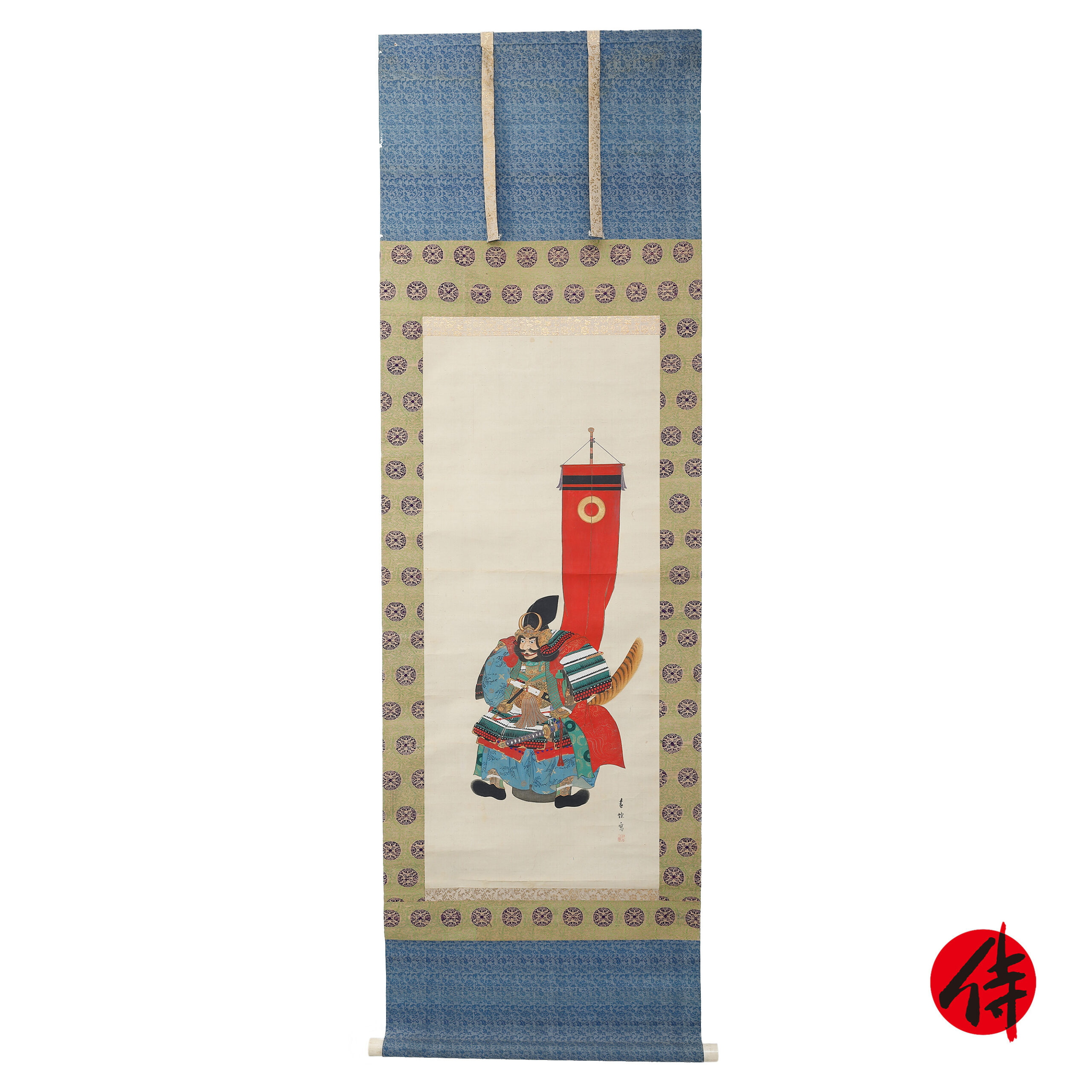


Examples of how to decorate a hanging scroll
This image is an example of how to decorate a hanging scroll. Hanging scrolls are an interior decoration that could be enjoyed by changing them according to the seasons. We hope you find your favorite designed hanging scroll and enjoy decorating your room with your great collection.

【About us】
Samurai Museum is located in Tokyo, Japan, exhibiting antique artifacts related to the Samurai history. Samurai Museum Shop is the place for those who are interested in Japanese culture and craftsmanship. We deal with antique Samurai swords/armor, traditional crafts made in Japan and so on.
【Payment method】
We accept payment through Stripe (Credit card), PayPal, Apple Pay or ChromePay, all of which are secure payment methods. Also, you don’t need to make an account on Stripe for the checkout. If you prefer other payment method, please contact us. You may either pay in JPY, USD, AUD, CAD, EUR, CHF or GBP. The price is set in Japanese Yen. Prices in other currencies are automatically calculated based on the latest exchange rate.

【Shipping duration】
We normally ship via EMS (Express Mail Service) provided by Japan Post. It usually takes at least 5-14 days to deliver the package after you place an order. Time of delivery is estimated as accurately as possible by the carrier but does not take into account any delays beyond our control such as by inclement weather, post office holiday seasons.
We offer Free International Shipping as long as we can ship your order by EMS. If you prefer other shipping carriers, please contact us.
We will inform you of the order’s tracking number via email. Please make sure you fill out your valid email address correctly.
*If you like to make sure if EMS shipping is available to your country, please contact us.

【How to make sure the condition】
Please keep in mind that what you are going to purchase is an antique item. We uploaded high resolution photos for you to check its condition thoroughly. If you like to see more photos with different angles, please feel free to contact us. We will be happy to send them to you so that you can make informed decision.
It is essential for us to know that you are happy with your choice of antique item and we are prepared to use the best of our ability to serve you.
Would you like see some more antique items for sale? Please check the link below. We hope you can find your favorite item.
https://www.samuraimuseum.jp/shop/product-category/antique/


